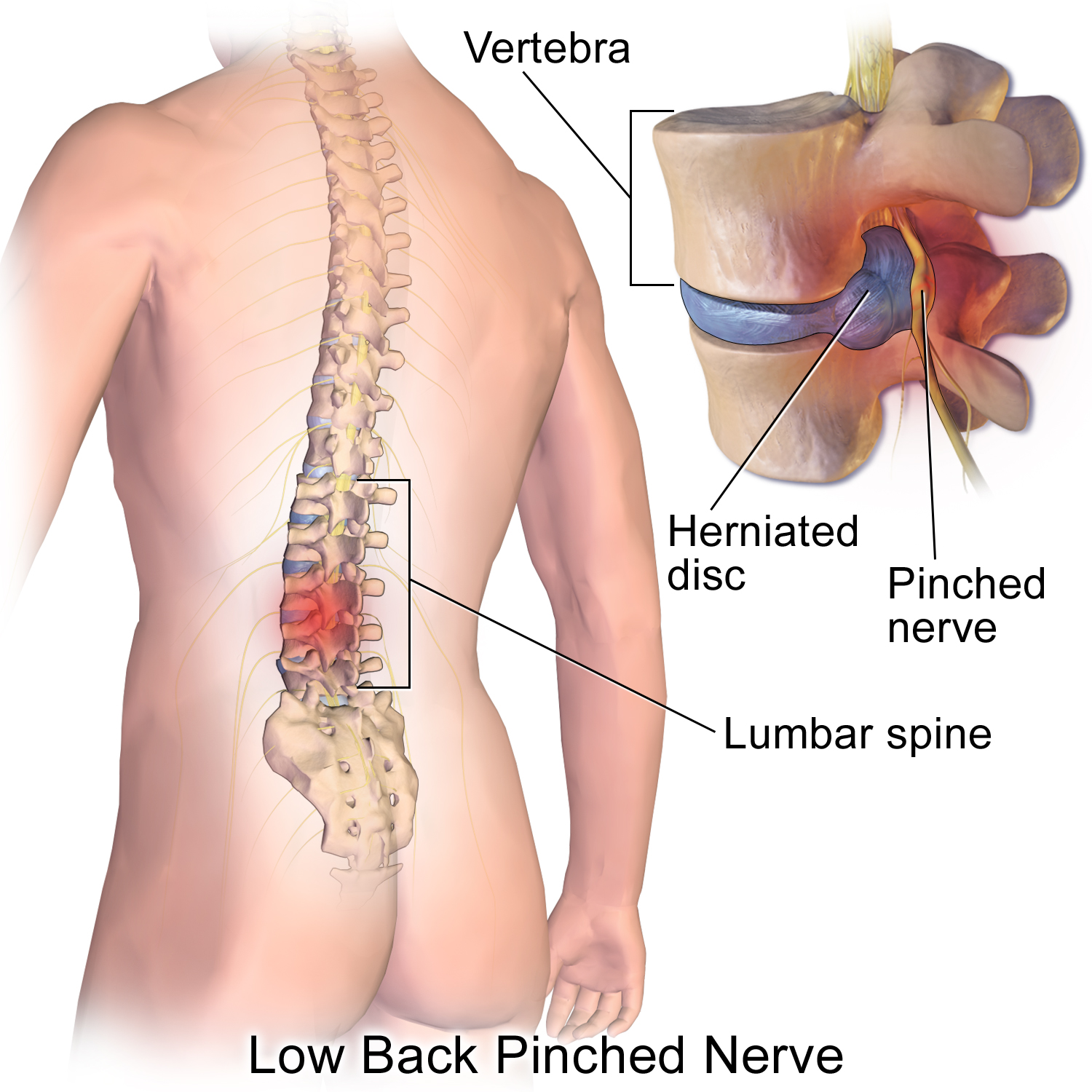
Did your MRI result show that you had a bulging disc or did your MD tell you that those bulging disc(s) were the cause of your lower back pain? Don’t freak out because that isn’t entirely true.
Here is a fact that should put your mind at ease.
Everyone has a bulging disc, particularly after the age 40 years old, on average. Many people have bulging disc(s) and don’t even know it. It is part of the aging as human beings and unfortunately, lifestyle plays a HUGE role.
On the other hand, some people have bulging disc(s) that is causing their symptoms. The bulging disc(s) mainly becomes problematic when it contacts the neighboring nerve root(s). You then start to feel symptoms down to the buttock or even trickling down the leg.
| Treatment for lower back pain due to bulging disc does exist!
Lower back pain caused by bulging disc is commonly seen in physical therapy and generally there is a right or left sided leg pain associated with it. On this page, I will talk about bulging disc symptoms, possible causes and DIY exercises to try to possibly get you some relief. So keep reading. |
For those that want the 411 on what a bulging disc is, here is a short visual summary.
Bulging disc is when it is pushed out to a certain direction (very commonly towards the back either to the left or right, sometimes it straight back- rarely does it bulge forward).
So imagine this….you have a one of those fire camp marshmallow in between two graham crackers. The marshmallow is our disc and the graham crackers are the vertebras. When you push the front ends of the crackers together, the marshmallow bulges to the opposite ends and past the cracker edges. Hence, the bulging disc.
As I mentioned before, that bulge can go to the right side, left side or straight back. And the most common segment of the lumbar spine for disc bulges to occur is L4-5, commonly causing sciatica.
Interestingly enough, it’s not the bulging disc that is the reason for pain. It’s when the disc contacts particular nerve root on the right, left or straight back causing the pain down either the right, left leg or both legs respectively.
To get even more nerdy….The size of the disc bulge also does not mean more pain. Ironically, unless the bulge is contacting the nerve root, you likely won’t have symptoms.
So now the question everyone is asking…..How do I know if my lower back pain is caused by a bulging disc?
To see if you experiencing the common signs and symptoms of bulging disc, click here.
Why does this happen? A mentor of mine explained this perfectly, so listen closely.
We as humans spend a heck of a lot of time in a forward bent position in the lumbar spine. Examples include sitting and working on the desk/computer, sitting and eating, bending down to pick things up, etc.
And we do this because it is VERY, VERY, VERY FUNCTIONAL! However, over time this takes a toll on our lumbar spine causing the disc to bulge backwards. For more details on the causes of bulging disc, read this.
But like I said, treatment for bulging disc does exist. The goal of treatment is to “milk” the disc back to center.
What I mean by “milk” is this…..
The discs in our spine are made primarily of H20 so with certain exercises to promote lumbar extension we can push decrease the bulging by milking the fluid forward.
I must say this. The purpose of this website is not to diagnose your lower back pain. In order to be diagnosed correctly please consult with a physical therapist or try this at your own risk.
I have put together a progression of lumbar extension exercises to assist you lower back pain and leg pain if it indeed has been due to a bulging disc pushed posteriorly ( a fancy term meaning backwards.)
Remember none of theses exercises are meant to be painful. PAIN IS NOT GAIN. So if you are doing theses exercises and they are increasing your lower back or leg pain, please STOP.
4 Important Tips with dealing with bulging disc with right or left leg pain….
First, discuss with your MD about taking anti-inflammatory medication because likely your nerves are inflamed. I have found that anti-inflammatories can improve your recovery time and overall pain. The reason why you are feeling the radiating pain down the leg is because your nerve(s) are inflamed.
Second, I also found that using a cold pack on your lower back helps with muscle spasms and muscle type pain. All you need is 10 min 2x/day.
Third, invest in a good lumbar support. I prefer the McKenzie Super Roll that helps you sit with better posture and support the lower back so it does not have to work harder than it already is.
Forth and most important advice. If you don’t limit your sitting duration and continue resume positions that are irritating your pain you will limit how much you can get better.
Put it this way. You are taking the time and effort to complete your exercises that designed to help alleviate your pain but you continue to sit at work more hours, you are undoing what you have been working towards.
So my advice is this, limit your sitting duration to every 30-45 min whenever possible and stand or even walk for about a min or two then go back to what you were doing. I understand, sometimes is it not appropriate to get up and walk around and that is AOK but the more you do the better.